Belyana: almost ready aircraft carrier for the Volga!
Huge five-span whitefish with a full load: "Whitefish about five cities"!
This is one example related to the influence of ingenuity on propaganda, while another one is already more specific and directly related to technology. Today, many engineers and economists say that "things for a long time" gradually go out of their everyday life and are replaced by disposable ones - this is supposedly more profitable, and it is technologically easier to do. However, nothing is new under the Moon! It was here in Russia and in the 19th century that our great Volga river already sailed ... disposable cargo ships! At the same time, their displacement reached as much as 2000 tons and more! And these vessels were called Belyany, which is also very significant.
In this photo, the dimensions of the belyany and above all the dimensions of its anchor are clearly visible.
First of all, we note that ingenuity, as a rule, works for laziness, it reduces the entropy and increases efficiency. So, for example, it was with the names of the Volga river vessels, of which there were a lot on our Mother Volga. “Mokshany” means from the Mohshi River, “Surks Banks”, “Suryaks” - the Sura Rivers (why invent something new - Sura - “Suryak”), “Tablets” - Banks from the boards ... after all, how many there were then and how simple and clear they were then called! At that time, they were recognized from afar, as we today distinguish the Chevrolet from the Marcedes. But in the midst of all this diversity, Blyana stood alone. And all because she really was ... well, very big! Other belyany were a displacement of two or more thousand tons, so it is not surprising that it was simply impossible to confuse such giant vessels with some other vessel! There is evidence that along the Volga the Belyans floated a hundred meters long, that is, their length was comparable to the size of the Aurora cruiser, and the side height reached six meters. That is, it could easily be placed next to a modern two-story house! If we measure in poods, then small belyans raised the load to 100-150 thousand pounds (pood –16 kg), but for the largest ones, the carrying capacity could reach 800 thousand pounds! That is, it turns out that this was a payload, albeit of a small, but still ocean steamer, although the Belyans themselves sailed exclusively from the headwaters of the Volga and to Astrakhan.
It is known that for the construction of one belyany it was required about 240 pine and 200 spruce logs. Since the bottom of the belyan was flat, they laid it out of the spruce boards, but the boards were made of pine boards. Frames were very often, so that the distance between them was no more than half a meter, as a result of which the bodies of the whites had absolutely exceptional strength. And as in Russia in the past it happened very often, at the very beginning, the belyans were built without a single iron nail, and only later did the masters begin to use iron braces. By their appearance, they resembled modern brackets for a stapler with pointed ends and were driven into a tree with sledgehammers. The strength of such anchoring was very high, and besides, by passing the need, they could be easily removed and then reused.
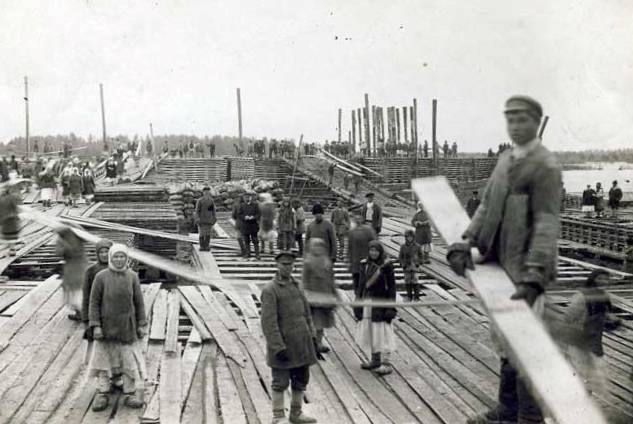
The construction of whitefish.
The durable body of the whitefish had the simplest shape, that is, it was sharpened both in front and behind. But they managed to drive the whitewash afloat with the help of a huge rudder, similar to the gates they had knocked down, and turned it with the help of a very long log that rose from the stern to the upper deck. Therefore, down the river, Belyana was not fused by the nose, but ... exactly astern! And she sailed with the flow, occasionally moving this rudder like a whale's tail, a samoplav, and with all its outward clumsiness it had excellent maneuverability! The fact is that, again, our artisans invented for this purpose ... a lot - a cast-iron ball on a chain that rolled along the bottom. Lot slowed down her speed on bystrin and helped to "steer", and when the shoals were not expected and the depth was decent, the lot was raised. In addition to the lot, there was a whole set of large and small iron anchors weighing from 20 to 100 pounds, as well as a lot of very different ropes of hemp and sponge.
Belyana on one of the pre-revolutionary postcards.
But, of course, the most interesting thing about the log mill was its cargo, for the sake of transportation of which it was just built. And this cargo was “white wood”, that is, white-yellow, shaggy logs. It is believed that it was because of their color that the Belians gave this name, although there is a point of view that, again, its name came from the Belaya River. In any case, Belyana always had a white color and served only one navigation, and therefore was never tarred - why do good translate ?!
At the same time, the weights were loaded in the same way as they were not loaded, and even now no other ship in the world is loaded. There was even such a saying, testifying that it was not an easy matter: “You can dismantle the belyanu with one hand, you cannot collect belyany by all the cities!” And the reason for this was this: the belyanu laid the forest not just with a pile - so much she would not take away, - and in stacks with several spans (aisles) between them in order to have free access to the bottom and sides in case of a possible leak. At the same time, the cargo itself did not touch the sides and therefore did not press on them. But since at the same time the seawater was very heavily pressed on the sides, special wedges were used, which, as the wood on board dried out, were constantly replaced with new ones, each time larger and larger in size.
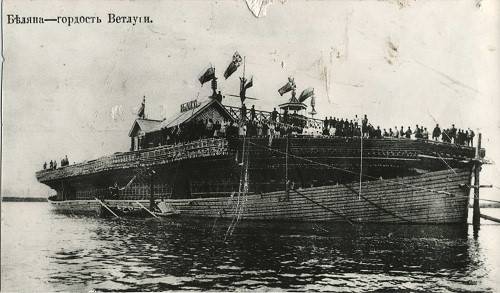
Belyana is the pride of the Vetluga river!
As soon as the forest somewhat exceeded the level of the board, the logs were laid in such a way that they stood for the dimensions of the ship hull and formed a kind of “balconies” on which they again laid the new row of logs, and then again pushed the next row of logs overboard and so several times! Projections were obtained, which were called dissolutions or separations, and which were required to be positioned so that the equilibrium of the vessel was not disturbed and did not lead to a lurch. And despite the fact that these dissolutions sometimes protruded four or more meters (!) In different directions overboard, so that the width of the blanket on its deck, like that of a modern aircraft carrier, could have been significantly greater than the hull. And here at some belyan it reached 30 meters, that is, it was possible to dance on it completely! But the log cabin above was also not solid, but had openings for airing. Therefore, in the old days, the size of whitefish was judged by the number of spans (cages) on it. And they were about three, four, and more spans.
The owner of this bog is clearly not stingy on the matter for the flags!
However, the Belyany deck itself was also a load, and it was laid either from a tesa (hewn boards) or sawn boards, and, as already noted, had dimensions that differed little from the deck of an aircraft carrier during the Second World War! An 2-4 gate was installed on it for lifting large anchors and tensioning the lot holding ropes. Well, closer to the stern, which again makes the architecture belyannogo with the aircraft carrier, there were at once two “islands” arranged in pairs along the sides - two timbered huts - “cossacks” in which the crew of the ship lived.
Between the roofs of these huts there was a high cross bridge with a railing and a carved shed in the middle, in which there was a place for the pilot. The booth was covered with whimsical carvings, and sometimes it was also painted “under gold”. And although the Belyany vessels were “disposable” and purely functional, they were nevertheless richly decorated with flags, not only with the flag of the Russian Empire and its trade flag, but also with personal flags of one or another merchant the images of the saints, who were thus expected to receive a blessing. They did not spare any money for this, therefore they were sometimes so large that they flew over the white trees like sails. They were not stingy with the expenses, because the larger the flag, the higher the “image” of the merchant!
Well, what is not ready "aircraft carrier"? Arrange a flat deck of boards and ... "Newpore" to take off!
There could be workers on the middle belyan from 15 to 35 people, and on the largest from 60 to 80. Many people had to work on pumps that pumped water from the hull. Usually the pump was 10-12 pieces, since the non-tarry body of the whitefish was constantly leaking. Because of this, we loaded the white cloth with trim on the nose. All the water flowed into it, and from there it was pumped out.
The construction of Belyan on the Volga reached its peak in the mid-19th century. Numerous cities and villages in the steppe Volga region needed logs for construction, and new for that time steamboats - firewood. The latter were also brought to the Volga ports solely on the belyanakh. And only gradually, in connection with the transition to the heating of steamers with oil, the demand for firewood on the Volga gradually fell. But until the end of the 19th century, the Belyans continued to build up to 150 units per year and, after loading with wood, floated them from the headwaters down the river all the way to Astrakhan.
Here, these unique vessels understood, so much so that from them even the chips and those left. Cossack huts were sold as, in fact, ready-made five-walls, which could only be collected, white wood went to log houses for other houses and to sleepers, they cut the belyanu into wood, and hemp, matting, ropes, not to mention iron fasteners Everything, absolutely everything went on sale and brought income to the owners of the moths!
Only the smallest belyans were loaded with fish in Astrakhan and went back in tow. Although then they were still dismantled for firewood, because it was unprofitable for their owners to keep the mothwood afloat longer than one season!
However, there are cases when belyany gathered and understood two times during one navigation! This was done with small belyanami in the very place where the Volga came very close to the Don. Here they moored to the shore, after which they removed all the cargo from them, while they themselves were taken to pieces. All this was carried by a horse to the Don, where the belyans were again collected, loaded, and fused into the lower reaches of the Don, where they were finally taken apart for the second time!
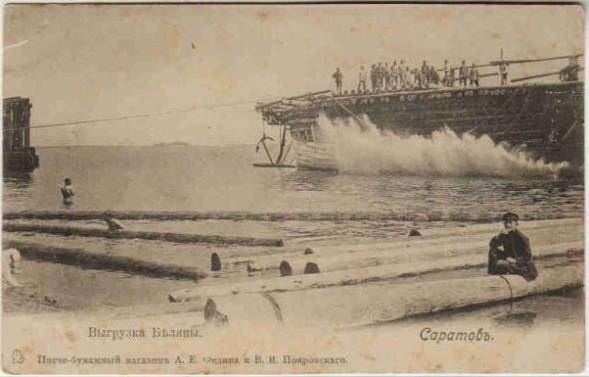
And this was how the bogs were dismantled: they simply threw logs into the water from both sides, and then they were caught and sent to dry on the shore.
Such amazing vessels were created on the Volga by the genius of unknown Russian masters of the nineteenth century. And - judge for yourself how far our ancestors were creative and resourceful people who managed to create such a highly effective waste-free product for one season in such a distant time from today! By the way, do you know why the bark was removed from the logs on the spot and they were carried by the “white” ones? And they dried out well during the voyage, and from the bark, on the spot, they drove out tar, which all other wooden vessels had ground!
We note, however, one more circumstance - the Belyans did not live to see the 1918 year, because if they had, they could have been - again, according to the famous Russian wit, - used as "Volga aircraft carriers" for the wheeled "Newpor" and "Farman" . It is known that the "aircraft carriers" on the Volga were only to create them on the basis of oil barges, and the "flying boats" of Grigorovich operated from them. They were launched on special boardwalkers and lifted aboard. The dimensions and smooth deck of the Belan completely allowed them to be used for the take-off of wheeled airplanes!
Model belyany in the exposition of the Saratov Museum of Local Lore.
PS Since at TOPWAR we even have science fiction writers among the visitors who write in the alternative genre storiesthen this is for them a practically ready basis for another exciting piece. If the author is “for the Reds”, then the novel may be called “The Volga aircraft carrier of the red warrant Stepashin”, and if “for the whites”, then exactly the opposite. And the main idea - another hitcher in the past and a pilot by profession chooses the side of red or white, builds a squadron of river aircraft carriers on the basis of two or three remaining belyan and with their help wins the civil war on the Volga and its surroundings. At the same time, he greatly changes the subsequent story, so when he comes back, everything here has changed too, and this is the main reason for that! Beautiful, poetic, and most importantly - what adventures in such a novel can be painted with the participation of these belyan-aircraft carriers - well, just yummy fingers!
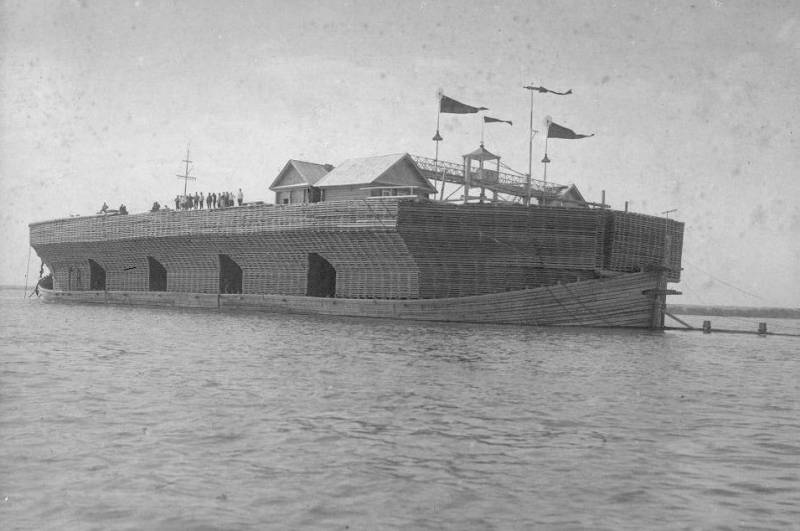
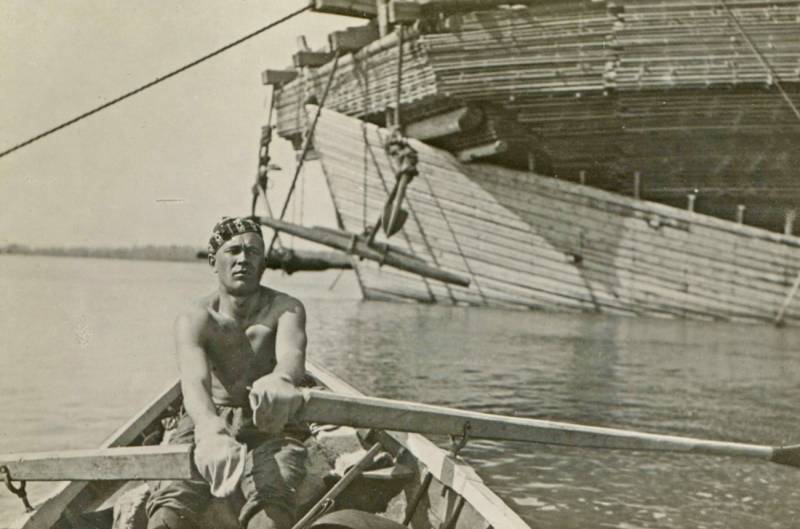

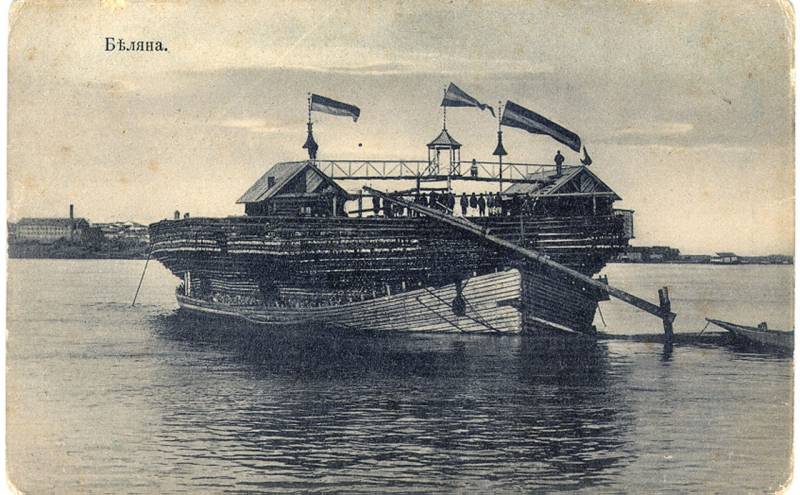
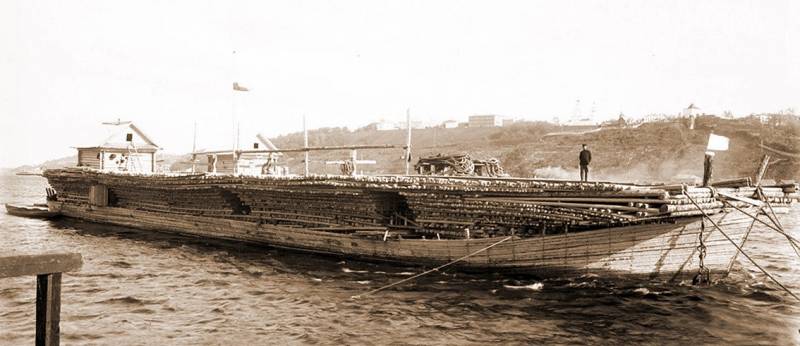
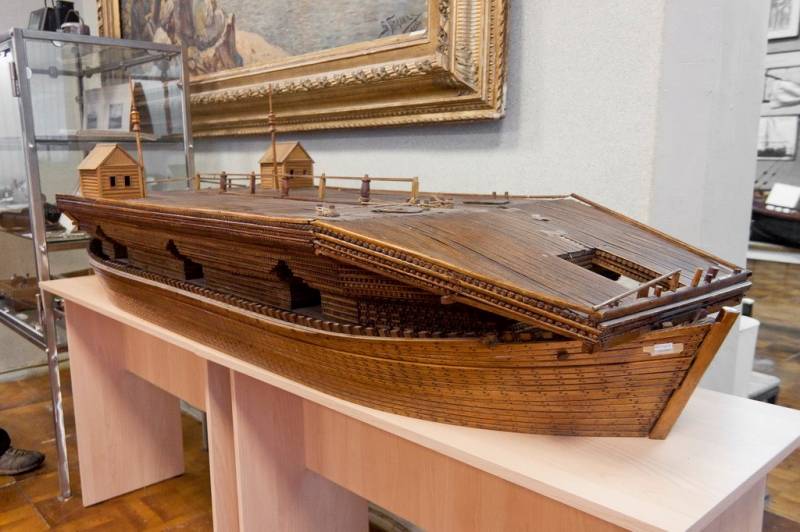
Information